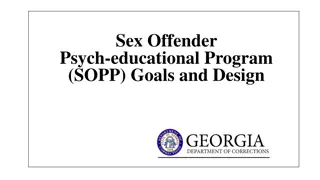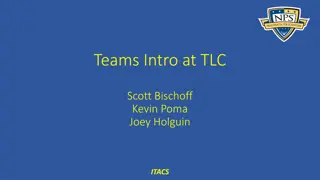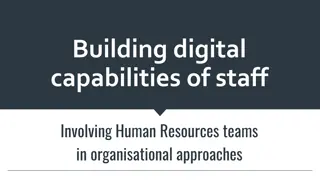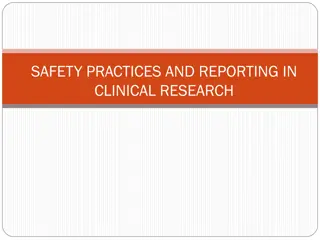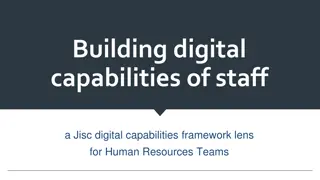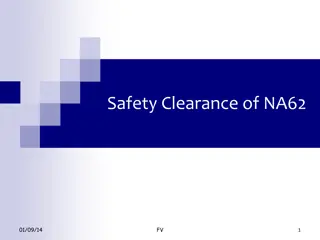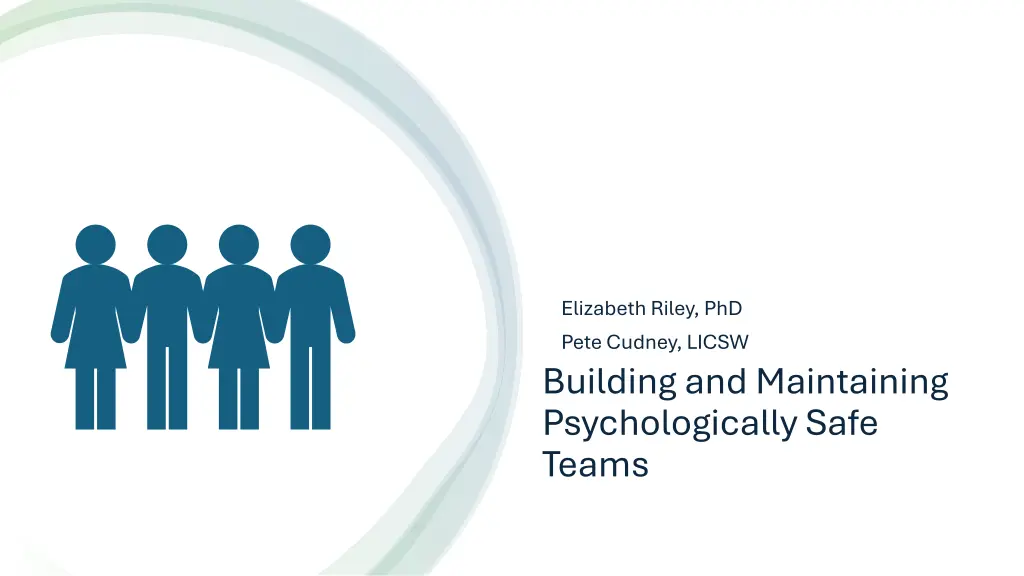
Building and Maintaining Psychologically Safe Teams for Better Team Dynamics
Explore the concept of psychological safety in teams, reflecting on past experiences, defining psychological safety, the importance of psychological safety in fostering trust and collaboration, and the SCARF model. Discover how creating a psychologically safe environment can lead to better outcomes in a variety of settings, including child welfare organizations.
Download Presentation

Please find below an Image/Link to download the presentation.
The content on the website is provided AS IS for your information and personal use only. It may not be sold, licensed, or shared on other websites without obtaining consent from the author. If you encounter any issues during the download, it is possible that the publisher has removed the file from their server.
You are allowed to download the files provided on this website for personal or commercial use, subject to the condition that they are used lawfully. All files are the property of their respective owners.
The content on the website is provided AS IS for your information and personal use only. It may not be sold, licensed, or shared on other websites without obtaining consent from the author.
E N D
Presentation Transcript
Elizabeth Riley, PhD Pete Cudney, LICSW Building and Maintaining Psychologically Safe Teams
Take a few minutes to reflect on your past team experiences. Can you recall a team experience that felt psychologically safe? Where you and your teammates trusted and felt secure with one another, and when you could problem solve or disagree and still feel solid in those relationships? What do you think allowed for that sense of psychological safety? Take a few minutes to share some of these thoughts with someone sitting near you.
Defining Psychological Safety Amy Edmonson: - the belief that, in a group, we are safe to take interpersonal risks (speak up with ideas, questions, concerns and mistakes), and that we won t suffer negative social or professional consequences as a result. Timothy Clark: - 4 stages of safety - not linear - may be in different stages in different teams
FSD Psychological Safety, by the questions If you make a mistake on my team, it is not held against you. 72% 73% The people on my team value each other's unique skills and talents. 81% 84% Members of my team are able to bring up concerns and challenges. 74% 76% 59% It is safe to take an interpersonal risk on my team. 61% On this team, people are not often rejected for having different ideas. 67% 67% 73% It is easy to ask other members of this team for help. 75% 0% 10% 20% 30% 40% 50% 60% 70% 80% 90% 100% 2024 2025
Why does psychological safety matter? Better care for children and families when people can speak up and learn when things don't go well or to learn how/why things are going well Longevity in the workforce and decreased turnover The majorityof FSD staff report that people they work with are a positive part of job Psychological Safety is a significant predictor of intent to remain in child welfare (NPCS data) Psychological Safety is significantly correlated with workplace connectedness in FSD Resilience of staff - we talk a lot about serving children and families well, but this does not need to be (and shouldn't be) at the expense of the workforce
SCARF Model Status Fairness Certainty Relatedness Autonomy Dr. David Rock www.NeuroLeadership.org
Status Certainty Autonomy Relatedness Fairness
Status Threats Threats Giving blunt advice or instructions Suggesting someone is ineffective or inefficient at a task Can I offer you some feedback? in a group Competition that implies some are better than others Boosts Boosts Learning and improving A sense of excellence at the we level our team is highly effective A match between your skills and what the group values Improvement relative to yourself, past benchmarks and current functioning Knowing you are appreciated by teammates Defining your own goals and sense of progress use of supervision and coaching Acknowledged for your unique areas of expertise Chances to acquire new skills, and recognition and reward for new skills Creation of unique roles within a team (HOPE Team, reps at workgroups, etc.)
Certainty Threats Threats Unpredictable patterns from colleagues (think folks who are tired or emotionally stressed) Unclear expectations Changes in leadership Changes in organizational structure Changes in policy or practice expectations Boosts Boosts Clear group agreements Shared agendas at the beginning of meetings Repeating patterns, like standing agendas Clarity about group decision making processes and information flow Clarity about the kind of conversation you are about to have information sharing, brainstorming, seeking consultation, group decision making, etc. Clear dates for objectives Breaking larger projects in smaller chunks and tackling smaller chunks at a time Leaders sharing plans and goals Explaining what will stay amidst change
Autonomy Threats Threats Unclear decision making processes Being micromanaged Being second guessed/Monday morning quarterbacked Unwelcome response to questions or challenges Boosts Boosts Clarity about decision making process, input, and resolution of disagreements Empowered teams: having options within windows of expectations Clarity about which decisions can be made independently, which need consultation and with whom Valuing individuality in office set up Affording some degree of self-scheduling Clarity about use of PTO and sick time Room for individual approaches to accomplish leadership s goals
Relatedness Threats Threats Failure to welcome and orient new team members Sideways communication talking to a third party when frustrated, instead of talking directly with the person involved Ruptures without repairs Serves without returns an idea offered to which no one responds Lack of team consultation/collaboration Boosts Boosts In person meetings Group check-ins Consistent welcoming of new team members Consistent processes of celebrating and saying goodbye to departing colleagues Projects that involve collaboration Avoiding individual feedback in a group when possible Team building activities/retreats Mentoring/coaching programs Smaller group sizes
Fairness Threats A focus on equality instead of equity Lack of clarity about workload assignment or adjustment Imbalanced relationships with a leader Different responses to the same situation for different people A focus on workload numbers as a means of finding equity Boosts Boosts Increased transparency workloads, pay scales, decision making processes Clear expectations from leadership Clear, consistent, and explicit responses to staff needs, and to staff who are impacted by Secondary Traumatic Stress Team input into workload management strategies New information shared quickly, consistently and widely Sharing of rationale behind tough decisions
Spend 10 minutes in pairs talking about how this may apply in your current work. Write your thoughts on sticky notes and post those up. Do you have a sense of psychological safety on a team? o How have you built this? o How could you build this? What could contribute to people feeling secure in their status certainty certainty, autonomy autonomy, relatedness relatedness, and fairness status, fairness on your team? How could you handle rupture and repair rupture and repair in your team? Can you plan to talk with your team about your ideas?
pcudney@uvm.edu elizabeth.n.riley@uky.edu





